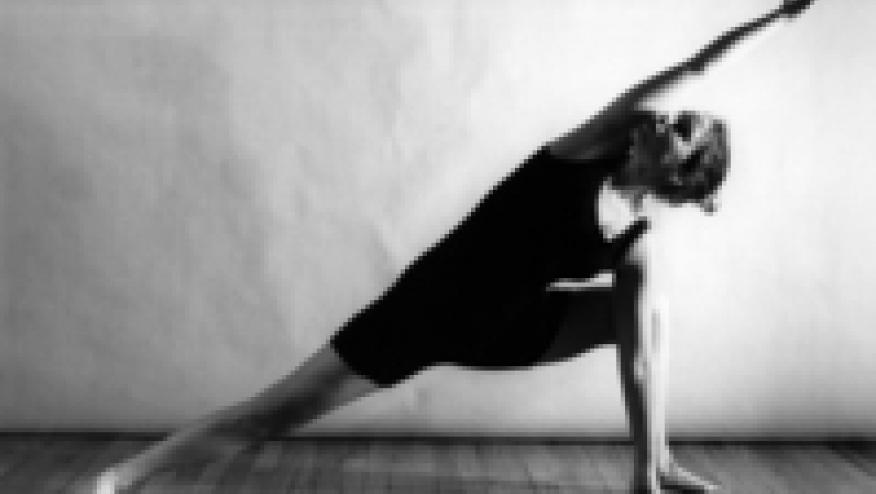Tai Chi Eases Fibromyalgia Pain Save

The mind-body practice of tai chi was as effective or better than currently recommended aerobic exercise for fibromyalgia, a randomized controlled trial demonstrated.
At week 24, scores on the revised fibromyalgia impact questionnaire (FIQR) showed significantly more improvement among patients participating in 12 or 24 weeks of once or twice weekly tai chi compared with those enrolled in 24 weeks of twice weekly aerobic exercise classes, with a mean between group difference of 5.5 points (95% CI 0.6-10.4, P=0.03), according to Chenchen Wang, MD, of Tufts University in Boston, and colleagues.
That difference, however, did not reach the estimated minimal clinically important difference on the FIQR of 8.1 points.
But in the highest intensity tai chi group -- twice weekly for 24 weeks -- the difference compared with the aerobic exercise group reached 16.2 points (95% CI 8.7-23.6, P<0.001), which was considered clinically important, the researchers reported online in The BMJ.
"The prevailing causal paradigm [of fibromyalgia] views it as a disorder of pain regulation associated with neuroendocrinologic changes in the central and peripheral nervous systems," they wrote.
Medical therapies such as analgesics have had only modest effects, and many patients discontinue because of a lack of efficacy and/or toxicity. Moreover, an estimated 11% to 69% of patients with fibromyalgia reported using opioids, with the attendant risks of misuse. The current standard of care includes moderate aerobic exercise, but many patients find this approach difficult and do not adhere to treatment programs.
Tai chi derives from ancient practices in Chinese traditional medicine. "This complex, multicomponent mind-body intervention integrates physical, psychosocial, spiritual, and behavioral elements to promote health and fitness," the researchers explained.
Two previous studies demonstrated that 12 weeks of tai chi had beneficial effects on physical and mental health among fibromyalgia patients, but the optimal frequency and duration of treatment have not been determined.
Therefore, Wang and colleagues enrolled 226 adults who met the criteria of the American College of Rheumatology for fibromyalgia, randomizing them to one of four different intensity tai chi groups or supervised aerobic exercise. All sessions lasted for 60 minutes, and participants were encouraged to continue the program at home between sessions as well as after the intervention ended. They also were permitted to continue whatever regular medical regimen they had been following.
Participants' mean age was 52, more than 90% were women, and they represented a racially/ethnically diverse population. Mean body mass index was 30, and mean duration of fibromyalgia pain was 9 years. Baseline FIQR score was 56 (range 0-100).
Approximately half were using narcotic medications at baseline, and 58% were on antidepressants.
Patients who were assigned to the tai chi classes attended 62% of the sessions, while those in the exercise group attended 40%.
Secondary endpoints that differed significantly at week 24 between the combined tai chi groups and the exercise group included:
- Patient's global assessment, 0.9 points (95% CI 0.3-1.4, P=0.005)
- Anxiety measured on the hospital anxiety and depression scale, 1.2 points (95% CI 0.3-2.1, P=0.006)
- Self efficacy, 1 point (95% CI 0.5-1.6, P=0.0004)
- Coping strategies, 2.6 points (95% CI 0.8-4.3, P=0.005)
Also at week 24, FIQR scores showed significantly more improvement in the 24-week tai chi groups than in the 12-week groups, with a difference of 9.6 points (95% CI 2.6-16.6, P=0.007). The 24-week tai chi groups also had greater improvements on depression scores and the Short Form-36 mental component.
At week 52, significant benefits persisted on patient's global assessment, anxiety, self efficacy, and coping strategies, and the FIQR score was significantly better in the most intensive tai chi group compared with aerobic exercise (11.1 points, 95% CI 2.7-19.6, P=0.01).
Medication usage among all groups declined throughout the study, including analgesics, antidepressants, and muscle relaxants.
Ten serious adverse events occurred, seven in the tai chi groups and three in the exercise group, but none were considered related to treatment. These included cancer, pneumonia, concussion, and aseptic meningitis.
"What we found suggests that patients may be more likely to enjoy, manage, and continue to practice tai chi, perhaps because it is a gentler, low impact movement with minimal side effects," Wang said in an accompanying blog comment.
"It may be time to rethink what type of exercise is most effective for patients with fibromyalgia," she noted.
"More importantly, what types or combinations of exercise would patients embrace in the long term? The public health problem of chronic pain calls for an 'all hands on deck' approach to give patients feasible therapeutic options for the management of fibromyalgia," she concluded.
Limitations of the study included patient awareness of their treatment assignment and substantial loss to follow-up, as is common in studies involving chronic pain.
The study was supported by the NIH's National Center for Complementary and Integrative Health, the National Center for Research Resources, and the National Center for Advancing Translational Sciences.
The authors reported financial support from the National Center for Complementary and Integrative Health, and no financial relationships with any organizations that might have an interest in the submitted work.










If you are a health practitioner, you may Login/Register to comment.
Due to the nature of these comment forums, only health practitioners are allowed to comment at this time.